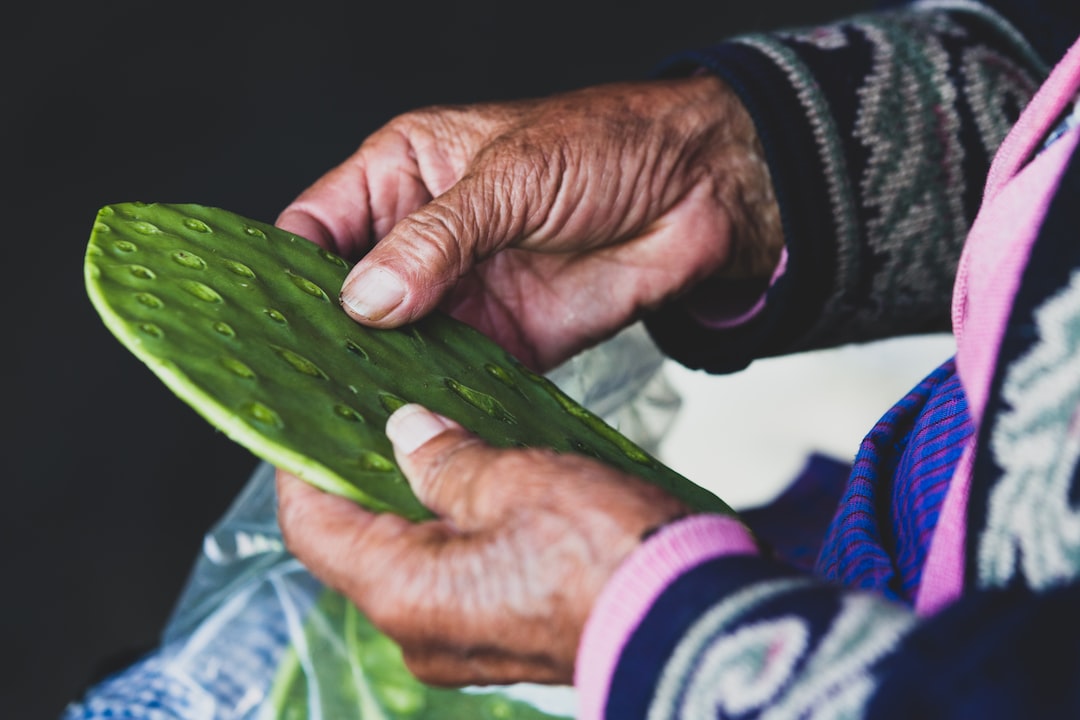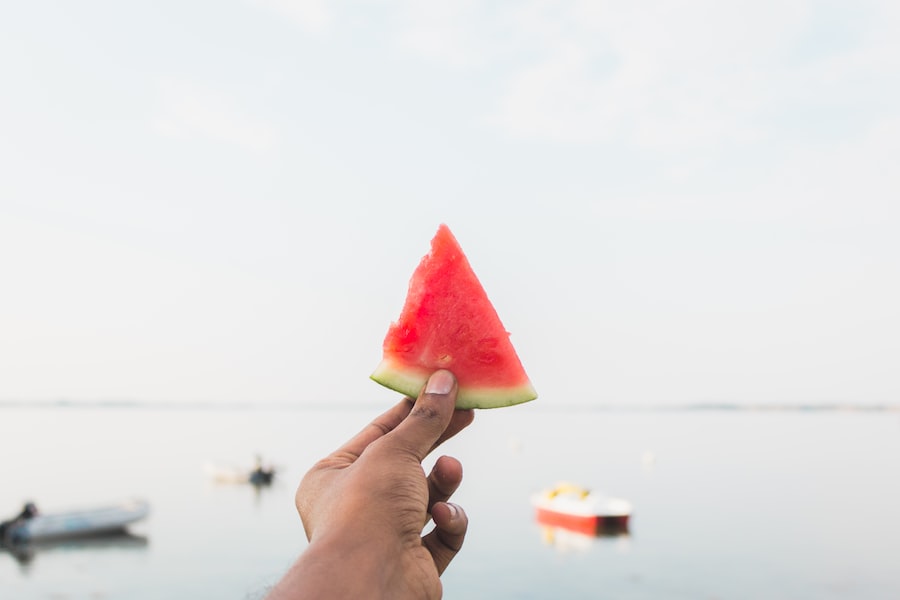Juicy Tips: How to Know When Your Watermelon is Ripe and Ready to Pick

Watermelons are a beloved summer fruit, known for their refreshing sweetness and juiciness. However, there is nothing worse than cutting into a watermelon only to find that it is underripe or overripe. Knowing when a watermelon is ripe is crucial for enjoying its optimal flavor and texture. In this article, we will explore various methods for determining watermelon ripeness, including examining the skin and color, tapping and listening for signs of ripeness, checking the tendril and stem, feeling the weight and firmness, using a sugar meter, smelling for sweetness, and observing the shape and size. By understanding these different indicators, you can ensure that you select the perfect watermelon every time.
Key Takeaways
- Watermelons ripen from the stem end to the blossom end.
- Timing is crucial for perfectly ripe watermelons, as they do not continue to ripen after being picked.
- A ripe watermelon should have a uniform skin color and a dull, matte finish.
- Tapping and listening for a deep, hollow sound is a sign of ripeness.
- The tendril and stem should be dry and brown for a mature watermelon.
Understanding the Basics of Watermelon Ripening
Watermelons go through a ripening process after they are harvested. During this process, enzymes break down starches into sugars, resulting in a sweeter and juicier fruit. The ripening process is influenced by factors such as temperature, humidity, and exposure to ethylene gas. As the watermelon ripens, it becomes softer and its flavor intensifies.
Sugar and starch play important roles in the ripening of watermelons. When a watermelon is unripe, it contains more starch than sugar. As it ripens, the starches are converted into sugars, giving the fruit its characteristic sweetness. This is why it is important to wait until a watermelon is fully ripe before consuming it.
The Importance of Timing for Perfectly Ripe Watermelons
Timing is crucial when it comes to harvesting watermelons for optimal flavor. Harvesting too early can result in a watermelon that lacks sweetness and juiciness. On the other hand, if you wait too long to harvest, the watermelon may become overripe and mushy.
When a watermelon is harvested at the right time, its flavor is at its peak. The sugars have fully developed, resulting in a sweet and refreshing taste. Additionally, the texture of the fruit is firm and crisp, making it enjoyable to eat.
Harvesting watermelons at the right time also ensures that they have a longer shelf life. Overripe watermelons tend to spoil quickly, while underripe ones may not ripen properly even after being harvested.
Examining the Skin and Color of Your Watermelon
| Aspect | Description |
|---|---|
| Color | The skin should be a uniform green color with no yellowing or browning. |
| Texture | The skin should be firm and smooth, without any soft spots or bruises. |
| Stripes | Watermelons should have dark green stripes that are uniform in width and well-defined. |
| Weight | A ripe watermelon should feel heavy for its size, indicating that it is full of water and sweet. |
| Sound | When tapped, a ripe watermelon should produce a deep, hollow sound. |
The skin and color of a watermelon can provide valuable clues about its ripeness. When selecting a watermelon, look for a skin that is dull rather than shiny. A shiny skin may indicate that the watermelon is underripe. The skin should also be firm and free from blemishes or soft spots.
The color of the watermelon’s skin can vary depending on the variety. However, there are some general guidelines to keep in mind. For most varieties, a ripe watermelon will have a deep green skin. Some varieties may have stripes or spots, which should be vibrant and well-defined. Avoid watermelons with pale or yellowish skin, as this may indicate that they are underripe.
Tapping and Listening for Signs of Ripeness
Tapping a watermelon and listening for a specific sound is a popular method for determining ripeness. To tap a watermelon, use your knuckles or the palm of your hand to gently tap on the surface. A ripe watermelon will produce a deep, hollow sound, similar to tapping on a drum.
The science behind this method lies in the density of the fruit. When a watermelon is ripe, its flesh becomes less dense and more hollow, resulting in the characteristic sound when tapped. On the other hand, an underripe or overripe watermelon will produce a dull or flat sound.
It is important to note that this method may not be foolproof, as factors such as the thickness of the rind and the size of the watermelon can affect the sound produced. Therefore, it is best to use this method in conjunction with other indicators of ripeness.
Checking the Tendril and Stem for Maturity

Another method for determining watermelon ripeness is by examining the tendril and stem. The tendril is a curly, green tendril that grows near the point where the watermelon attaches to the vine. When a watermelon is ripe, the tendril will turn brown and dry up.
Similarly, the stem of a ripe watermelon will also dry up and become brown. If the stem is still green, it may indicate that the watermelon is underripe. However, if the stem is completely dried up or missing, it may indicate that the watermelon is overripe.
It is important to note that this method may not be applicable to all varieties of watermelons, as some may not have a tendril or stem. Additionally, it is best to use this method in conjunction with other indicators of ripeness.
Feeling the Weight and Firmness of Your Watermelon
The weight and firmness of a watermelon can provide valuable information about its ripeness. When selecting a watermelon, pick it up and feel its weight. A ripe watermelon will feel heavy for its size. This is because as a watermelon ripens, it accumulates more water content, resulting in a heavier fruit.
In terms of firmness, a ripe watermelon should feel firm but not rock hard. Gently press your thumb against the skin of the watermelon. If it gives slightly under pressure, it is likely ripe. However, if it feels too soft or mushy, it may be overripe.
It is important to note that different varieties of watermelons may have different levels of firmness when ripe. Therefore, it is best to familiarize yourself with the specific variety you are selecting.
Using a Sugar Meter to Determine Ripeness
A sugar meter, also known as a refractometer, is a tool that measures the sugar content of a watermelon. It works by measuring the refractive index of the fruit’s juice, which is directly related to its sugar content. To use a sugar meter, simply cut a small piece of the watermelon and squeeze out some juice onto the prism of the meter. The meter will then provide a reading of the sugar content.
Using a sugar meter can provide an objective measurement of ripeness, as it directly measures the sugar content. However, it is important to note that this method requires a specialized tool and may not be readily available to everyone. Additionally, it may not be necessary for casual watermelon consumers who can rely on other indicators of ripeness.
Smelling Your Watermelon for Sweetness
The smell of a watermelon can also provide valuable information about its ripeness. To smell a watermelon, simply bring it close to your nose and take a whiff. A ripe watermelon will have a sweet and fragrant aroma.
The smell of a watermelon is influenced by the presence of volatile compounds, which are responsible for its aroma. As a watermelon ripens, these compounds develop and contribute to its characteristic smell. Therefore, if a watermelon lacks fragrance or has an unpleasant odor, it may indicate that it is underripe or overripe.
Observing the Shape and Size of Your Watermelon
The shape and size of a watermelon can also provide clues about its ripeness. When selecting a watermelon, look for one that has a symmetrical shape and is free from deformities or irregularities. A ripe watermelon should have a uniform shape and size.
Additionally, pay attention to the size of the watermelon in relation to others of the same variety. A watermelon that is significantly larger or smaller than others may indicate that it is underripe or overripe, respectively.
It is important to note that the shape and size of a watermelon can vary depending on the variety. Therefore, it is best to familiarize yourself with the specific characteristics of the variety you are selecting.
Harvesting and Storing Your Ripe Watermelon for Optimal Flavor
Once you have determined that your watermelon is ripe, it is important to harvest and store it properly to maintain its flavor. When harvesting a watermelon, use a sharp knife or shears to cut the stem close to the fruit. Avoid pulling or twisting the watermelon, as this can damage the fruit.
After harvesting, store the watermelon in a cool and dry place, such as a pantry or cellar. Avoid storing it in direct sunlight or in the refrigerator, as this can affect its flavor and texture. If you need to store a cut watermelon, wrap it tightly in plastic wrap and refrigerate it.
To enjoy your ripe watermelon at its best, it is recommended to consume it within a few days of harvesting. The longer a watermelon is stored, the more its flavor and texture will deteriorate.
Knowing when a watermelon is ripe is essential for enjoying its optimal flavor and texture. By examining the skin and color, tapping and listening for signs of ripeness, checking the tendril and stem, feeling the weight and firmness, using a sugar meter, smelling for sweetness, and observing the shape and size, you can ensure that you select the perfect watermelon every time. Additionally, harvesting and storing your ripe watermelon properly will help maintain its flavor. So next time you’re at the grocery store or farmers market, use these methods to choose a ripe and delicious watermelon for your summer enjoyment.



